How to Import Japanese Kei Trucks to US: Benefits and Challenges
Kei trucks have been gaining momentum in the United States for their compact nature and budget-friendly price range. As people across the nation become increasingly interested in these Japanese mini trucks, the process of importing them has become more widely known. We’ll take a look at detailed aspects of kei trucks, including their history, popular models, and a step-by-step guide for importing them from Japan to the USA.
What Exactly Are Kei Trucks?

The Basics of Kei Trucks
Kei trucks (or keitora in Japanese) are small, light-duty vehicles designed to be ultra-compact and versatile. They are categorized under the keijidosha (light vehicle) segment in Japan due to their size and engine capacity restrictions. These tiny workhorses typically have an engine displacement below 660cc, producing under 63 horsepower, keeping them within the Japanese regulations for a kei vehicle.
Origins Within Japanese Market
The emergence of kei trucks dates back to post-World War II Japan, when there was a need for affordable and efficient transportation. Initially developed as three-wheeled vehicles, they quickly evolved into four-wheelers seeing widespread adoption among local farmers and delivery businesses.
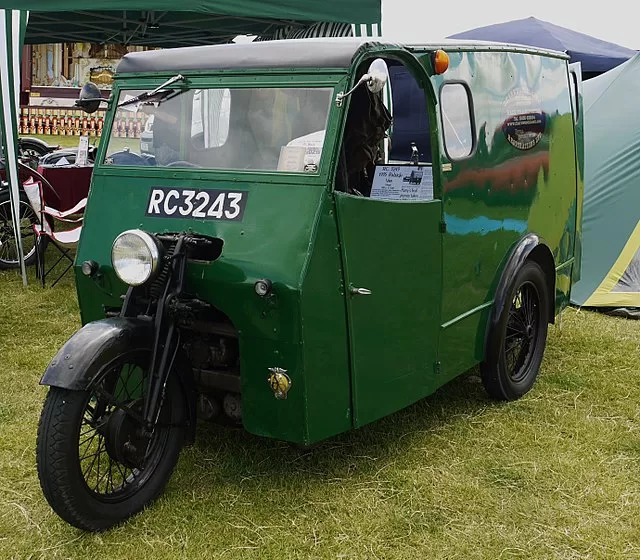
Why Are They So Popular in Japan?
Advantages within Japanese Market
The popularity of kei trucks in Japan can be attributed to several factors, including tax benefits, ease of parking/usage due to narrow streets, fuel efficiency, and low-cost maintenance. Additionally, kei trucks offer a better cargo-carrying capacity compared to similarly priced sedans or compact vehicles while occupying minimal space on congested streets.

Utility Across Industries
Kei trucks are used in various industries such as agriculture, construction, retail delivery services, and small businesses overnight camping/day trips due to their versatility and adaptability – making them an essential part of daily life throughout Japan.
Top 5 Best-Selling Kei Truck Models in Japan and Description
1. Suzuki Carry
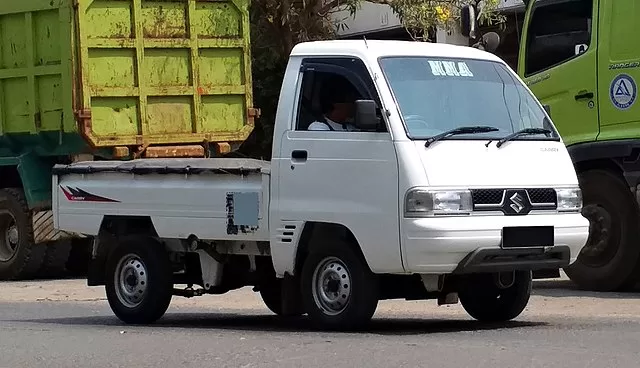
As one of the most iconic and well-recognized kei trucks, Suzuki Carry has been a market leader for decades. Known for its dependability and low operation costs, it is widely used by businesses globally.
2. Daihatsu Hijet
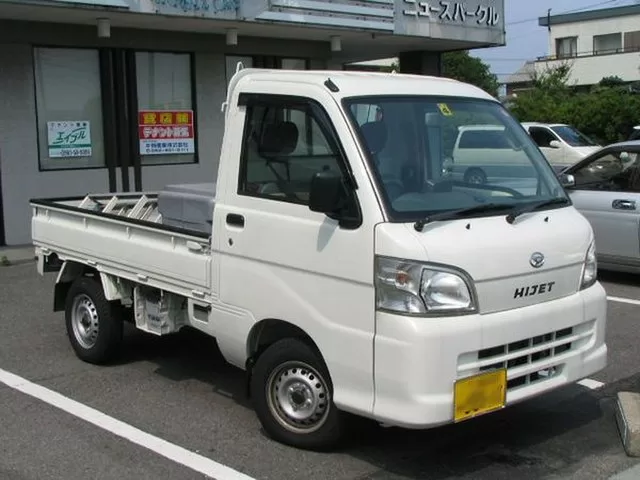
A popular choice for those requiring a compact yet practical vehicle, Daihatsu Hijet offers various body styles, such as cargo vans and cab-over pickup truck iterations. Built with a focus on fuel efficiency and utility, it remains in high demand among Japanese users.
3. Honda Acty
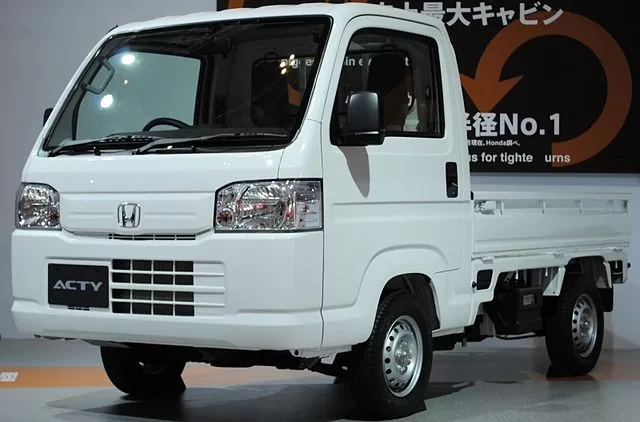
The Honda Acty is admired for its agility and toughness; its independent suspension system allows for smoother rides even on rough terrain. Coupled with renowned Honda reliability, the Acty is an ideal choice for off-road use.
4. Subaru Sambar
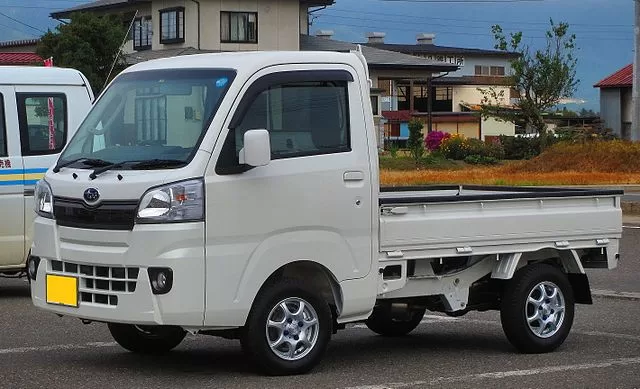
Distinguishable by its unique design and strong performance even in rugged conditions, Subaru Sambar comes in both van and truck styles. With an optional AWD feature, this truck easily maneuvers itself through any obstacle.
5. Mitsubishi Minicab
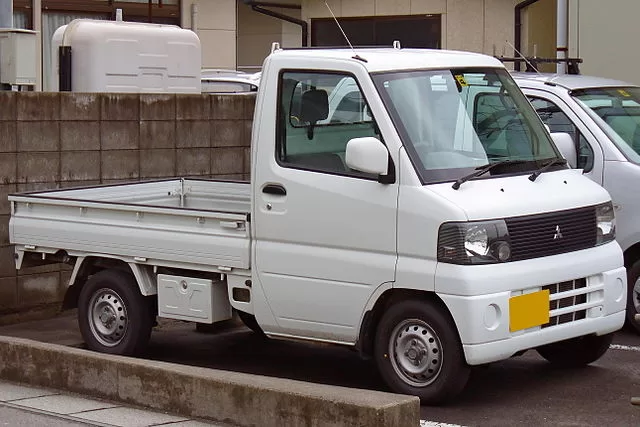
Well known for excellent fuel consumption and durability, Mitsubishi Minicab features a rear-wheel or all-wheel drivetrain experience while remaining competitively priced. Moreover, the inclusion of electrically driven models under this name has attracted eco-conscious consumers.
What Makes Kei Trucks So Desirable in the USA Now?
Used car prices in the US have become increasingly unaffordable, with the average used car costing around $30,000. Even with great credit, a 60-month loan, and a 10% down payment, the interest alone can cost nearly $10,000, bringing the total cost of the car to over $41,000. As such, many consumers are looking for alternatives to buying used cars in the US. One option is to import cars from other countries like Japan.
Japanese used cars are known for their low mileage and good condition. According to statistics, Japanese car imports have increased in recent years. Importing a car from Japan can be done without hassle, but it’s recommended to get an expert involved. However, it’s important to ensure that the imported car complies with US regulations to avoid potential legal issues and additional costs.

One reason why Japanese cars are cheaper than domestic cars is because they’re produced at a lower cost due to economies of scale and differences in labor costs. While importing a car from Japan may involve additional costs such as shipping and customs fees, it may still be cheaper than buying a used car domestically due to the price gap between domestic and imported cars.
However, it’s important to note that exporting used cars can also pose serious environmental hazards. Used cars exported from wealthy nations often lack pollution controls and are harvested for valuable metals before being shipped abroad. As such, importing a car from another country should be done carefully and with consideration for environmental impact.
Affordable Price Range
The popularity of kei trucks in the US primarily stems from their affordability. When compared to trucks available in the US today, they can cost up to $30,000, like a Toyota Tacoma or Ford Ranger, or full-sized pickup trucks retailing above $85,000, like a Ford F-150 Raptor or Toyota Tundra TRD Pro
Kei trucks represent an appealing alternative, with import costs usually totaling around $6,000 – $14,000 depending on model, condition & age.
Compact Size
Their small dimensions make kei trucks incredibly versatile in a variety of applications across the country, including farming, commercial, recreational purposes, and compact-size vehicles to fulfill niche demands in unique industries.
Additionally, their ability to navigate tight spaces and easy maneuverability make them an attractive prospect for American consumers.
How Hard is it To Import a Kei Truck from Japan?
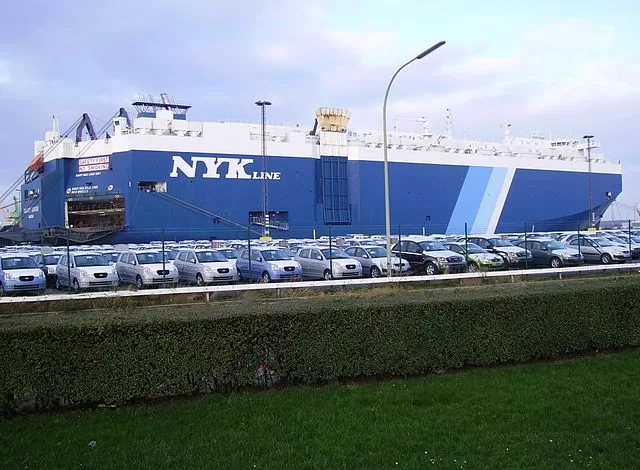
A Step-by-Step Guide to Importing Kei Trucks from Japan
Importing a Kei truck from Japan can seem overwhelming, but with the right information and guidance, it can be a straightforward process. In this guide, we will provide detailed steps to import a Kei truck into the United States legally and efficiently.
Important Note: This guide is for informational purposes only; we strongly recommend consulting with a licensed customs broker or legal expert before embarking on this process.
Overview of the Process
- Choose an Exporter
- Buy the Vehicle
- Shipping Preparation
- Submit Required Documents
- Pay Duties & Taxes
- Register the Vehicle in the US
Step 1: Choose an Exporter
Selecting Your Japanese Exporter
The first step in importing a Kei truck is finding a reputable exporter in Japan to facilitate the purchase and export process. Some popular exporters include Japan Partner Inc., Tradecarview, JDM EXPO., and Japan Car Direct.
Research and Compare Exporters
Take the time to research different exporters and read customer reviews to ensure that they have a good track record of delivering quality vehicles and providing excellent customer service.
Step 2: Buy the Vehicle
Decide on Your Preferred Kei Truck
Once you have selected your exporter, choose the Kei truck you want to import based on factors such as price, condition, mileage, and desired options/features.
Check The Age of Your Chosen Vehicle
Ensure that your chosen vehicle is at least 25 years old (from its date of manufacture) to comply with DOT (Department of Transportation) exemption rules for classic vehicles.
Step 3: Shipping Preparation
Arrange Steam Cleaning of the Vehicle
To comply with USDA requirements, make sure your vehicle will undergo steam cleaning before export to ensure it is pest-free. This will help avoid any issues during entry inspections.
Choose Your Shipping Method
We recommend the roll-on roll-off (RORO) shipping method for single-vehicle imports, as it avoids additional costs associated with container shipping and potential inspection fees.
Step 4: Submit Required Documents
Complete and Submit Required Forms
You will need to complete several different forms, including:
- CBP Form 7501 (Informal Entry)
- DOT HS-7 Short Form
- EPA Form 3520
These forms must be correctly completed to avoid problems with your shipment.
File an Importer Security Filing (ISF) 10+2 Declaration
An ISF 10+2 declaration must be submitted within 24 hours of the vehicle’s loading onto the ship at the foreign port. The completed declaration should be filed no later than 48 hours before the ship’s departure.
Step 5: Pay Duties & Taxes
Determine and Pay Import Duties
Kei trucks are subject to import duties that must be paid to Customs upon arrival at the destination port. Generally, pickup trucks are subject to a duty rate of 25%, while passenger vehicles have a duty rate of 2.5%. Calculate the appropriate duty based on the value of your vehicle and submit payment to Customs.
Pay Additional Fees
Aside from import duties, additional fees may also apply, such as Harbor Maintenance Fees (HMF) and Merchandise Processing Fees (MPF).
Step 6: Register the Vehicle in the US
Obtain a Trip Permit and Insurance
Upon receiving your imported Kei truck, obtain a temporary trip permit from your local Department of Motor Vehicles (DMV) office and purchase an appropriate insurance policy.
Register Your Vehicle with your Local DMV
Once you have completed all import requirements, submit the necessary documents and fees to your local DMV to officially register and license your Kei truck. Documents required may vary by state but generally include the following:
- Original Bill of Lading (BOL)
- CBP Form 7501
- Japan Export Certificate
- Vehicle Title or Proof of Ownership
- Proof of Insurance
- Trip Permit
Once your registration is complete, you can enjoy your imported Kei truck legally in the United States!
Kei Truck Models: Popular Choices and Their Features
Suzuki Carry, Daihatsu Hijet, Honda Acty, Subaru Sambar & Mitsubishi Minicab
Various kei truck models are available for import from Japan that cater to different needs. A comprehensive comparison of popular options such as Suzuki Carry, Daihatsu Hijet, Honda Acty, Subaru Sambar, and Mitsubishi Minicab can help you identify and select the most suitable model based on factors such as cargo capacity, engine performance, fuel efficiency, and available features. Take time to research each model’s specifications before making an informed choice.
Maintenance and Spare Parts: Ensuring Long-term Usability in the US
Securing Reliable Maintenance Services
When importing a kei truck to the USA, it is crucial to ensure the availability and cost of maintenance services and spare parts. Research on local mechanics or workshops specializing in Japanese vehicles or kei trucks will prevent any unnecessary delays or complications when it comes to servicing your vehicle. Additionally, source trustworthy suppliers who can provide genuine spare parts at reasonable prices.
Import Taxation and Duty Fees: Financial Obligations Associated with Imports
Understanding Import Costs
Before you begin the process of importing a kei truck, familiarize yourself with all financial obligations tied to imports, like import duties (2.5% for passenger vehicles or 25% for trucks), taxes (at varying state rates), and registration fees specific to your location. Keep in mind that these costs can significantly impact your overall budget.
Legal Requirements & Restrictions: Registering and Complying with Regulations
Navigating Local Rules
Different US states may have their specific requirements and limitations when it comes to registering, emissions standards, safety compliance, or usage of kei trucks. Contact your local Department of Motor Vehicles (DMV) to learn about the regulations that apply to your area, ensuring a smoother and more compliant experience when using your imported kei truck.
Insurance Policies: Protecting Your Imported Vehicle
Selecting Suitable Insurance Plans
Insurance is an essential aspect of owning any vehicle, including imported kei trucks. Research various insurance providers that offer policies specifically tailored for these compact trucks to ensure adequate protection and fulfillment of legal requirements. Compare coverage options, premiums, deductibles, and customer reviews before deciding on the most suitable policy for your needs.
Vehicle Modification: Customization Tips and Guidelines
Optimizing Your Kei Truck
Vehicle modifications can range from aesthetic enhancements to functional upgrades that boost performance or cater to specific uses like off-roading, towing, or mobile business/conversion setups. Consult with knowledgeable professionals to understand the legal bounds within which you can modify your kei truck so as not to violate any regulations and maintain your vehicle’s optimal functionality.
Driving Tips & Challenges: Adapting to Right-Hand Drive Vehicles
Overcoming Common Driving Challenges
Learning how to drive a right-hand-drive vehicle in a left-hand-drive country like the United States presents unique challenges, such as maneuvering through merge lanes, toll booths, or safely overtaking other cars. Join online forums or communities where fellow kei truck owners share experiences and guidance on adapting to the nuances of driving these compact vehicles on American roads.
Fuel Efficiency & Eco-Friendly Initiatives: Reducing Your Carbon Footprint
Understanding Fuel Consumption and Sustainability
The fuel efficiency of kei trucks varies across models, so it is essential to consider the vehicle’s impact on the environment relative to conventional cars or trucks. Researching MPG (miles per gallon) ratings, CO2 emissions, and any environmentally-friendly initiatives offered by manufacturers will help you assess your kei truck’s contribution to sustainability.
Kei Truck Community & Support Groups: Connecting with Fellow Enthusiasts
Networking for Information, Assistance, and Camaraderie
Joining online forums, social media platforms, or local clubs dedicated to kei truck enthusiasts can provide useful information, technical tips, and feedback from experienced owners who have successfully imported a vehicle before. Networking with like-minded individuals can aid in navigating the complexities of importing a kei truck while fostering camaraderie among fellow importers.
Resale Value & Market Prospects: Future Trends in Kei Truck Demand
Assessing Long-term Investment Value
Lastly, it is essential to be aware of the potential resale value of your imported kei truck in the American market. Research prevailing trends that may impact its demand or desirability over time – including fuel prices, societal attitudes towards small vehicles or Japanese imports, and any changes in regulatory policies. An informed understanding will equip you better when it comes to evaluating your long-term investment.
By considering these ten crucial aspects outlined above and carrying out thorough due diligence at every stage of the process, you can make a well-grounded decision when importing a kei truck from Japan to the USA.